The Red-capped Plover Charadrius ruficapillus is a very cute shorebird that is often seen scurrying along the shoreline around Australia. The estimated population is 95 000. They can be found in significant flocks along the coast, but also may be encountered at inland wetlands. The male bird has the “red cap” more than the female during the breeding season and is believed to take less interest in the nesting. Females seem to be the only sex to sit on the eggs according to literature, but no research appears to have been done on the night time routine. They both take responsibility protecting their young and remain in a family group for a period of time.
Male Red-capped Plover
Around Broome the breeding season does run throughout the year, but the majority of nesting occurs during our winter months after the cyclone season. You are most likely to come across a nest during July and August. They are quite happy to nest amongst the busiest sections of the beach and tolerate human traffic to some extent. This nest was in an area used by joggers due to the perfect soft sand for a good “work-out” and then it was marked, so they would run around it.
Female Red-capped Plover on nest in jogging area
Another nest was in the higher area behind where vehicles access the beach and despite the odds the eggs successfully hatched.
Female Red-capped Plover shading eggs from the midday sun
Both adults will display a “broken wing” to distract any intruders. They will do this to lead the intruder away from the nest area. It is not uncommon to experience this quite by accident due to the fact that the nests are so well camouflaged. If you follow the bird you know you will not accidentally stand on any eggs.
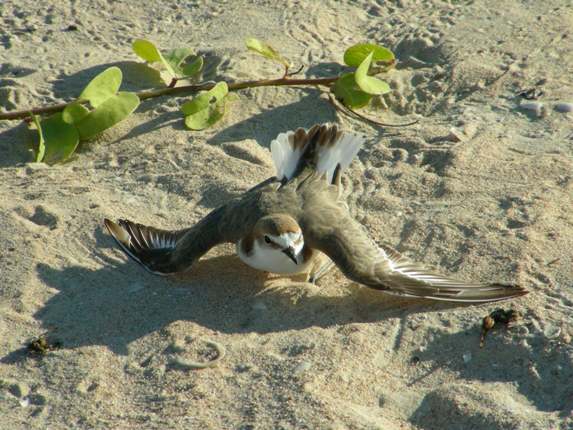
Female Red-capped Plover showing “broken wing” display
Once the eggs hatch the parents will keep them amongst the beach vegetation for a day and their tiny footprints are rather cute! An adult only weighs about 50 grams, so a chick hardly marks the sand.
Red-capped Plover family footprints
Once the tide goes out the family will venture out onto the sand and the chicks will need to learn to be dependant immediately. The adults will keep close and protect them as much as possible, but it all involves a lot of running around until they are able to fly.
Family group of Red-capped Plover
Sometimes the chicks will be rather bold and wander off on their own, but as you can see ….they have legs made for running!
Three day old Red-capped Plover
Sometimes a chick runs looking for shelter and it has no choice but to use what ever it can find on a big open beach. This is my favourite photo of where you can hide if you are small, cute and fluffy on Cable Beach…..
Red-capped Plover chick hiding in a footprint!
Looking forward to sharing more shorebird breeding with you, but of course most of the shorebirds here are migratory and are heading north to Siberia to return later in the year.


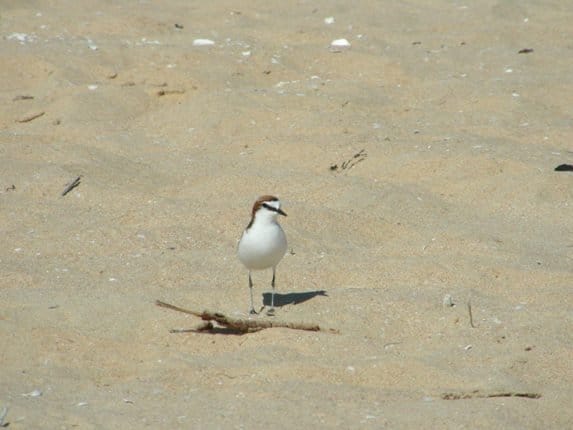
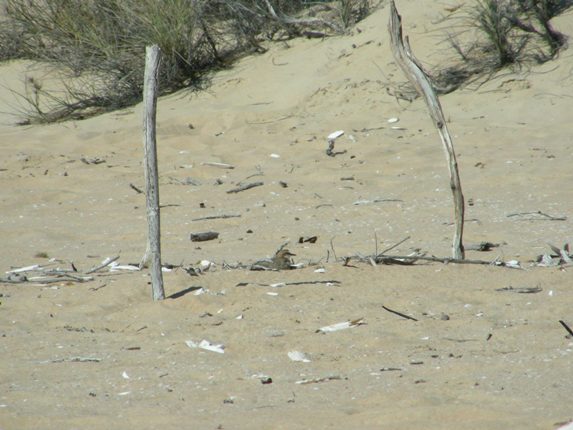
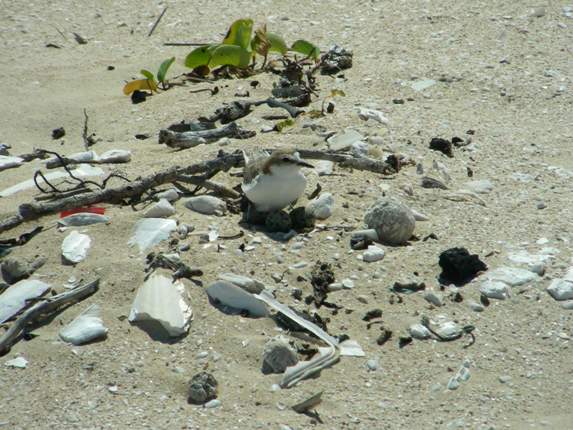
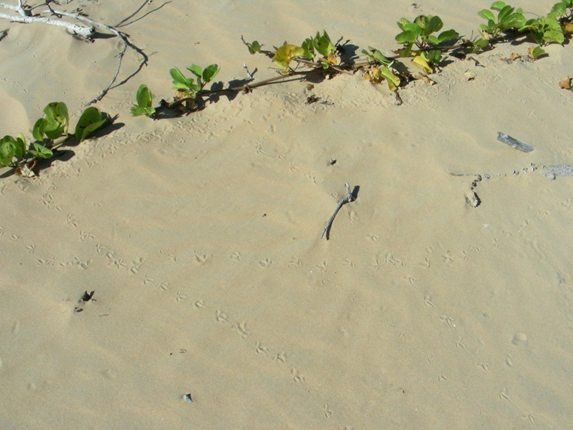
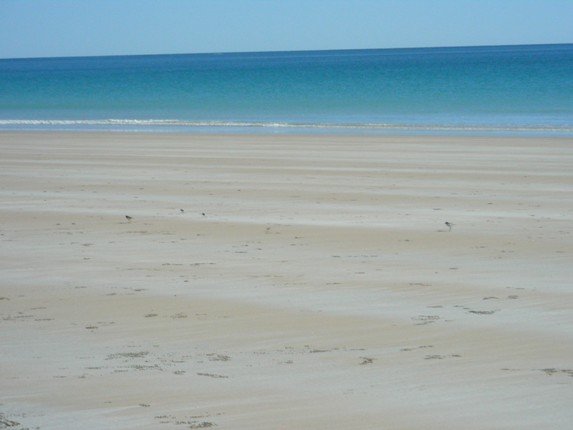

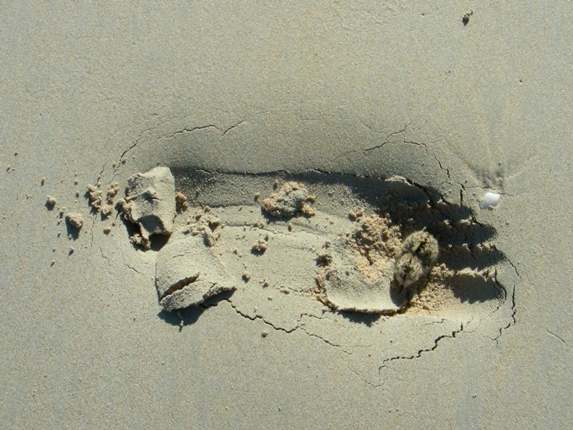











Hi Clare,
I love your plovers and the moral is, watch where you tread!
Awesome, and has me anxiously awaiting the Semipalmated and Common Ringed Plover breeding seasons.
Enjoyed your post, but it would be great if you said where you are! This isn’t a bird we have around here…
Very cute. The species sometimes breeds here in New Zealand, so I hope to see one here!
@ Redgannet-and “watch where you sit” if you are in the “clothing optional area!”
@ Clare-our “lost” semipalmated plover here has coloured up, so maybe it will work out to get out of Australia and into the correct Flyway! It arrived by accident in October 2009.
@ Teresa-“about the author” explains where I live-I will always say when I am away from “home” ie:-Tasmania earlier this year.
@ Duncan-Good Luck with finding a RCP in your patch!
Seriously cute pictures
@ Mom-yes! Shorebird chicks are a lot cuter than passerine chicks!
Is the Red capped plover a migratory bird? There is a plover that is all red which is migratory. Is this the same bird species?
@ Romy-this Red-capped Plover Charadrius ruficapillus is resident here and breeds here. It sounds like you are thinking of another species. Incidentally a student has recently monitored them nest sitting and it turns out the males do all the night sitting and the females during the day. They believe it’s to avoid predation, as he is so much more coloured and more obvious in daylight hours.